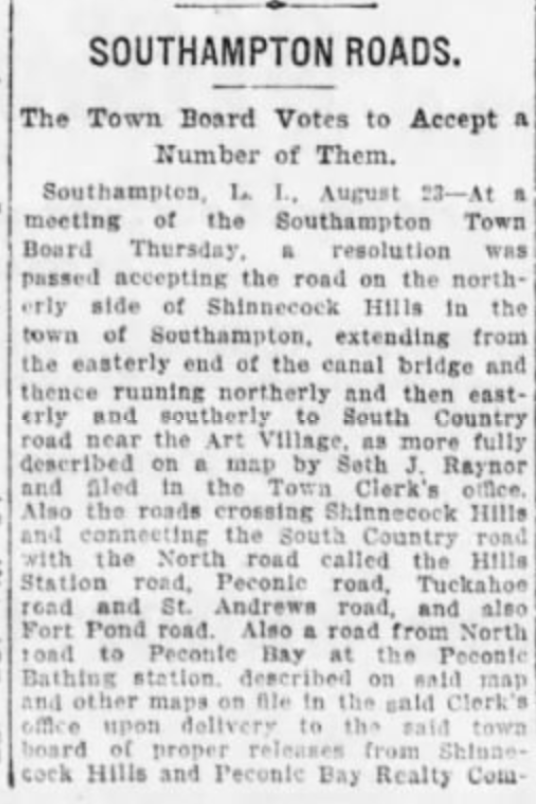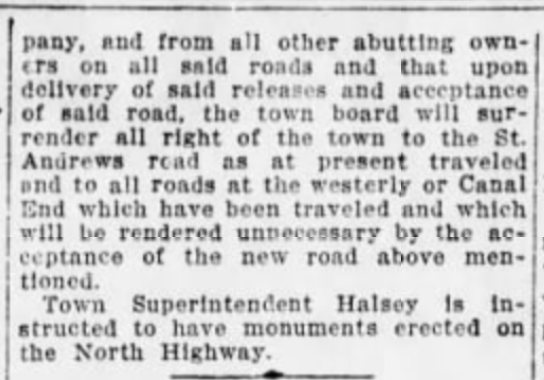1916 is as good a point as any to do a quick recap of Raynor's work to this point. With World War I looming, there was most likely a bit of uncertainty lurking on the horizon for a young golf architect.
Without much evidence as to why he chose this career, we can only speculate that there was something about the work that intrigued him. Perhaps one misconception we have about Raynor, with little prior experience with the game of golf, is that he was a kind of Johnny-on-the-Spot, having lucked into his career as CBM's right hand man. It is true that Raynor didn't start playing the game until after his work at NGLA, Sleepy Hollow, Piping Rock and St. Louis. But he had known about the game and how courses were built for a long time, dating back to his early days assisting his father with the surveying of Shinnecock in the 1890's.
Whatever the reasons were for why Raynor pursued an early career in Civil Engineering, it is no stretch to see how those skills were compatible with the work he was learning working with CBM at NGLA. Golf course design and construction was a fairly logical next step for the man who had spent his post-graduate years working with maps, roads, sewage, drainage and water works. There may have been a few men in the country as versed as Raynor, but probably none in the world of golf with the background to take on the necessary dam and drainage work at NGLA, let along the massive engineering project of the Lido in 1914.
There are really no reports on Raynor's choice to transfer from his Civil Engineering practice to a career dedicated to designing and building golf courses. I doubt it was a decision made overnight. After NGLA, it is obvious that CBM recognized Raynor's value, and capitalized on it with their first few projects at Sleepy Hollow, Piping Rock and St. Louis.
However it happened, whether self-initiated or at the recommendation of MacDonald, at some point Raynor began taking on projects by himself. This may have first occurred at Forest Park in St. Louis, or a year or so later with renovation work at Misquamicut or Nassau or entire new course projects at Westhampton or North Shore. What we do know is that by the time Raynor started his work at Mountain Lake he was a known entity in the world of golf course architecture, and was being sought after to do solo work. His informal partnership with CBM would continue for a number of years, but by 1915 his transition to becoming a course architect was pretty much complete.
I am posting the first half of this Jan 14, 1923 Brooklyn Daily Eagle here, as it as good a summary of Raynor's early career path as you can find in print. The entire article will be posted later in the thread.
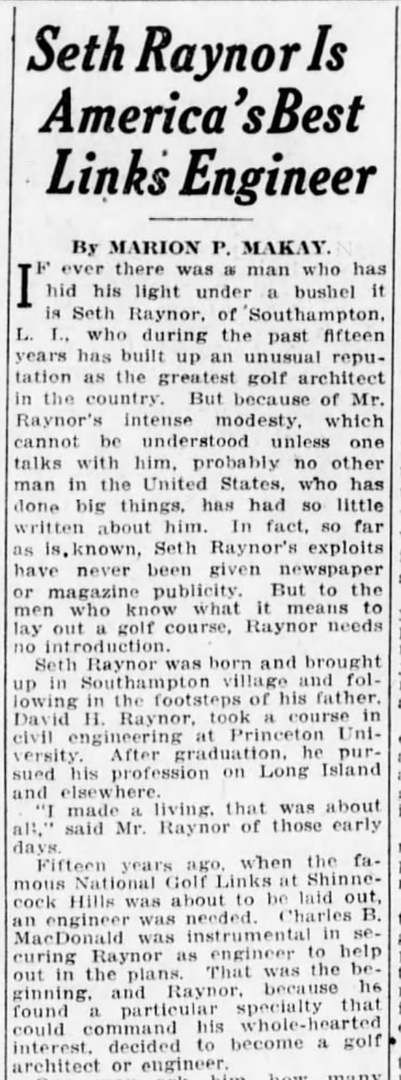
There is some scant evidence that Raynor's decision to pursue a full-time career as an architect didn't occur until some time after 1913.
In 1912, he resigned from his position as Street Commissioner of Southampton to lay out a golf course in St. Louis. Two weeks later he was reappointed in the same role.
March 29, 1912 County Review -
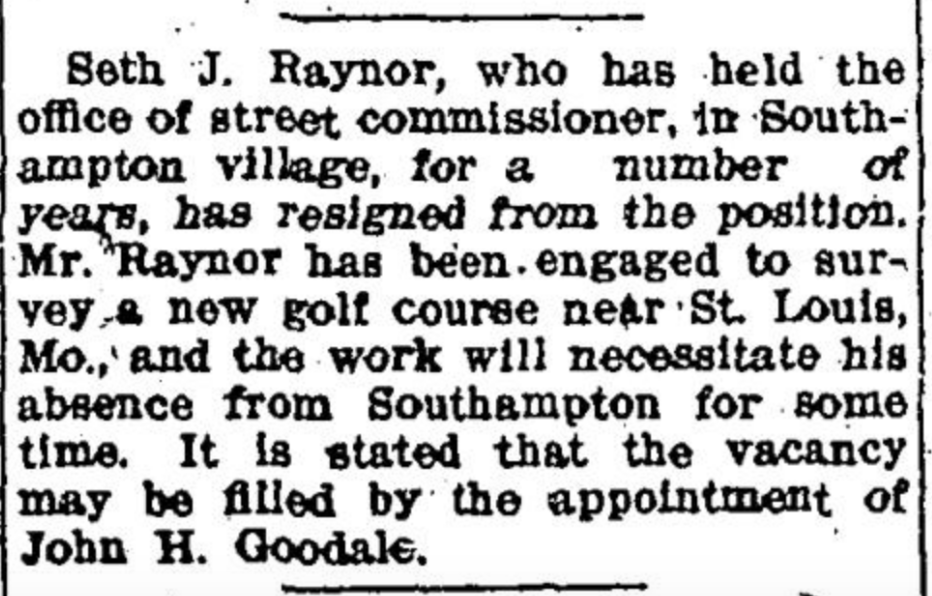
April 15, 1912 Brooklyn Daily Eagle -
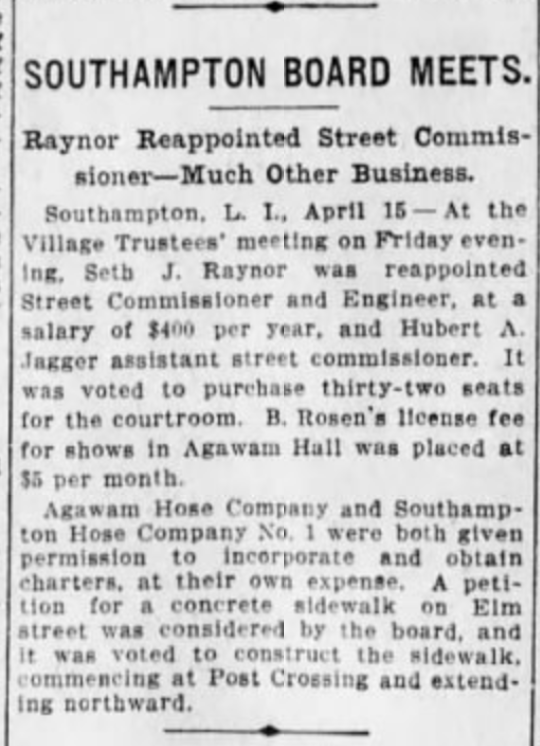
In 1913 he was still active as a surveyor.
April 6, 1913 Brooklyn Daily Eagle -
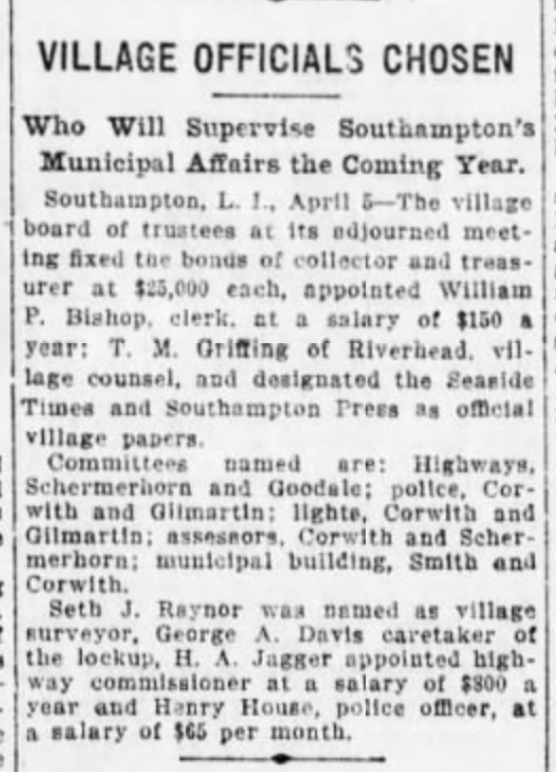
Aug. 24, 1913 Brooklyn Daily Eagle -
